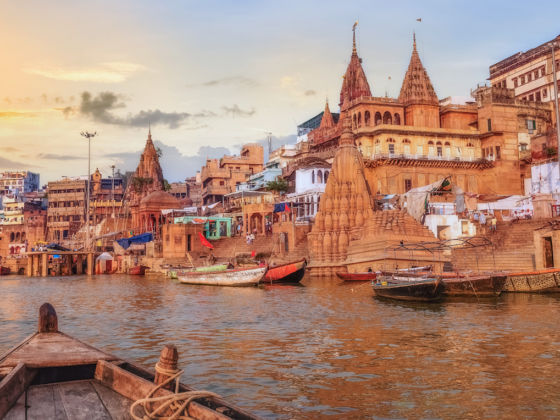Michael, from County Kerry, feeds Runtlin Rimpoche antibiotics through a syringe. The puppy seems unsure whether it’s worth the effort. The steep fan of bones looks bigger than the dog.
We are at the Krishnamurti Center, upriver. Maybe in Benares a dog’s death is also auspicious. When his time comes, Runtlin Rimpoche will not be wrapped in saffron, set down upon logs and ignited. But he already operates in us as part of the death consciousness of Benares.
